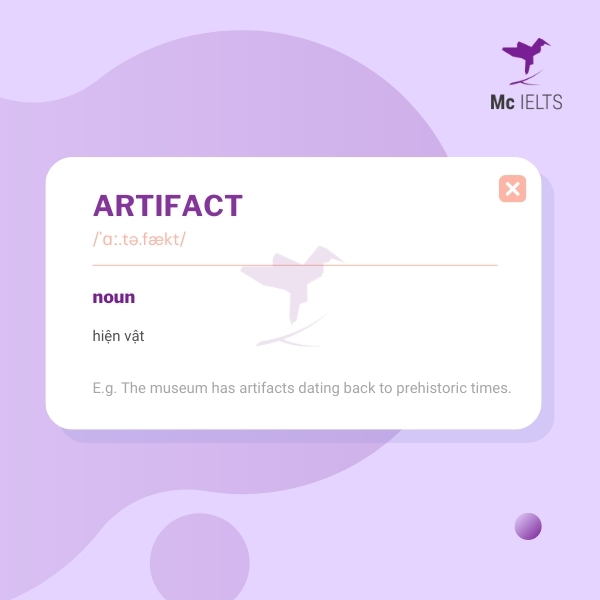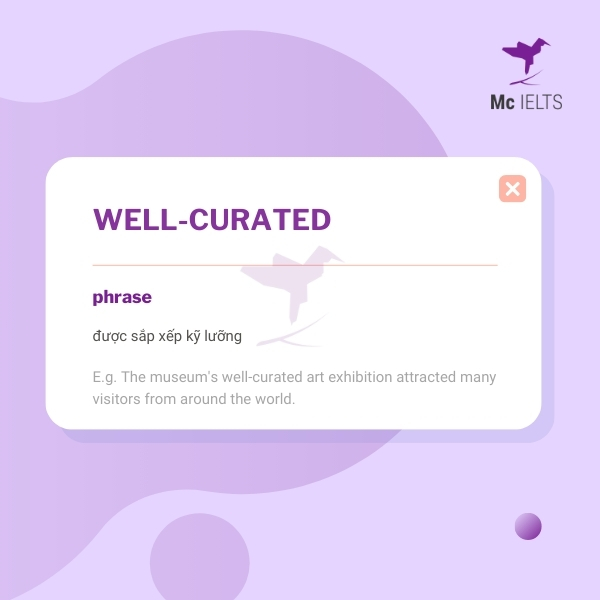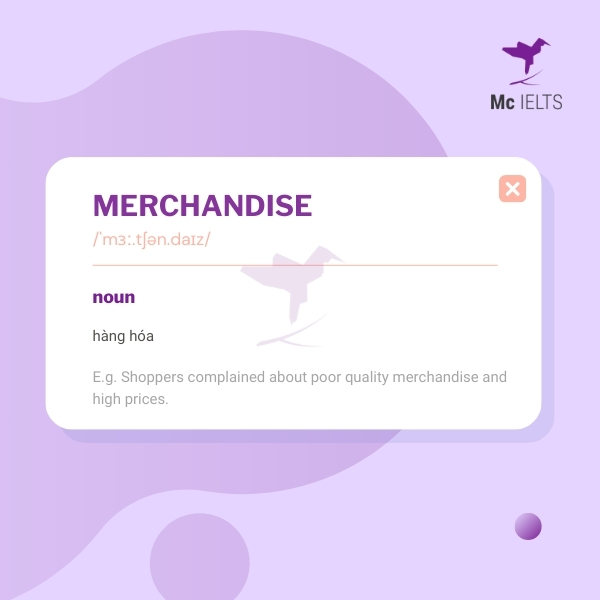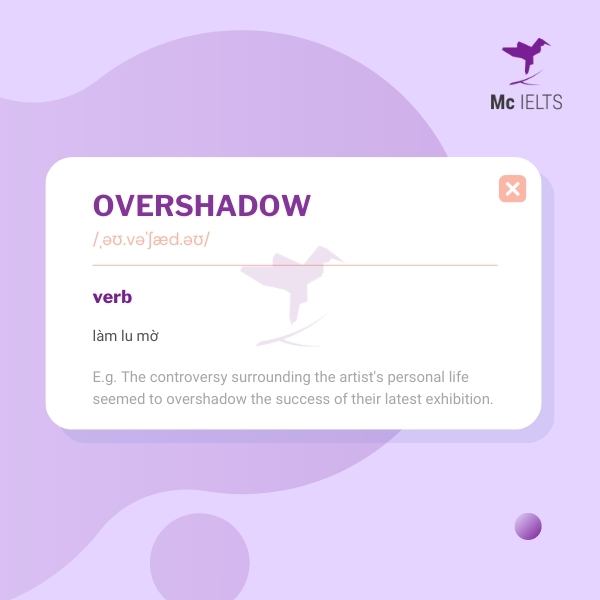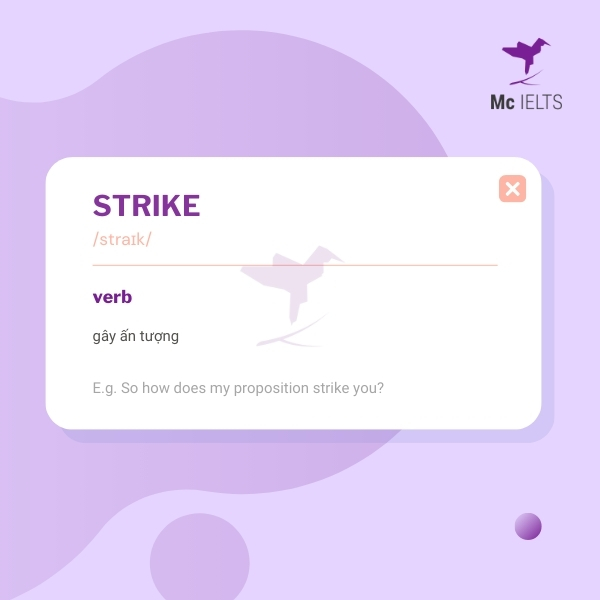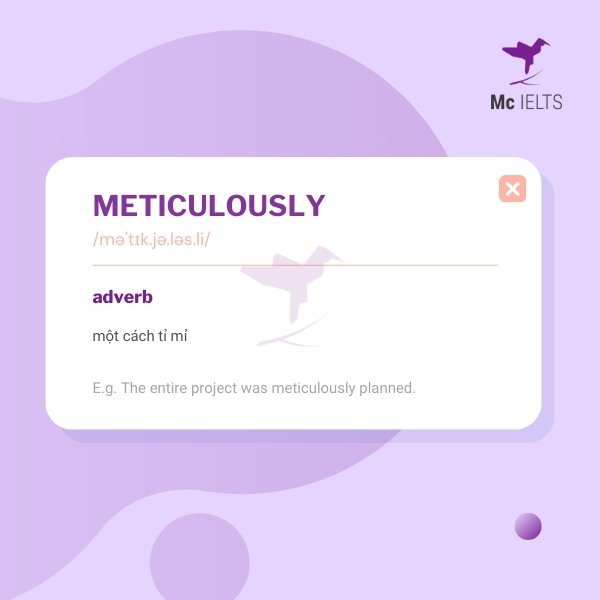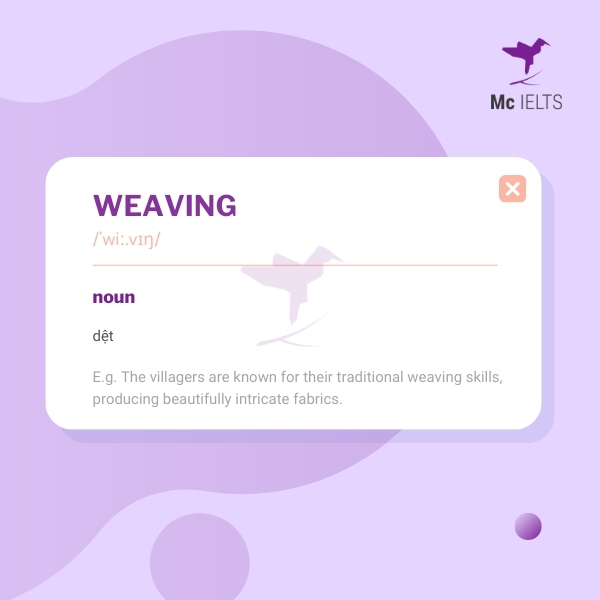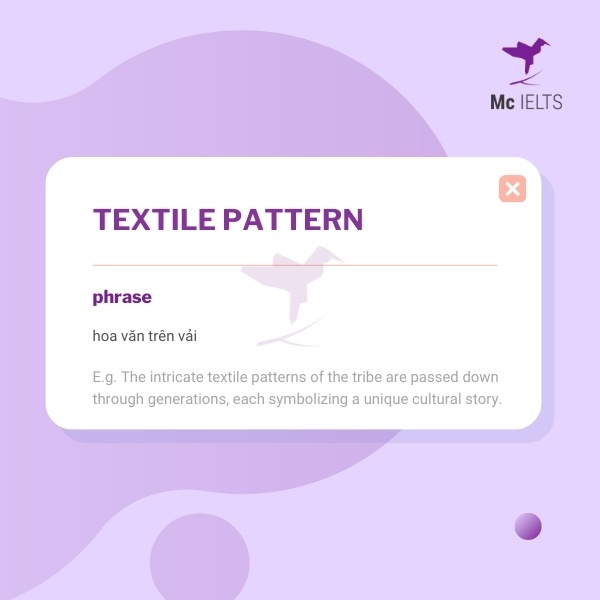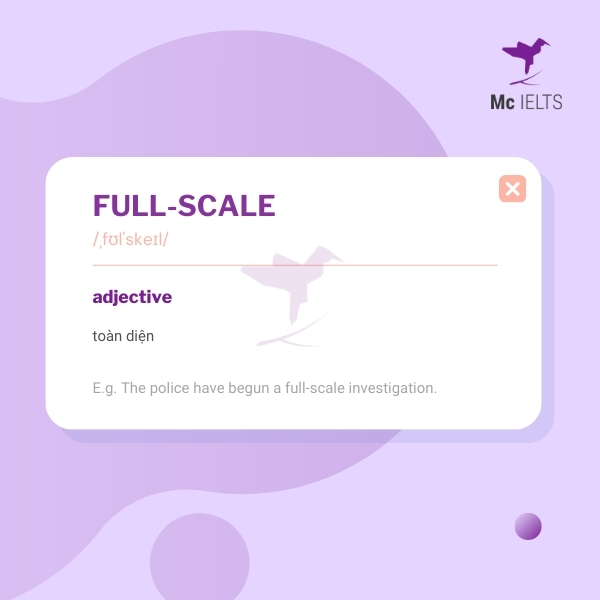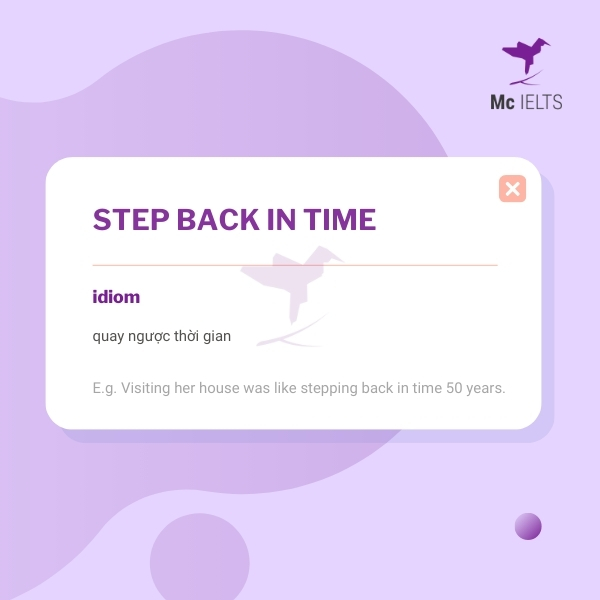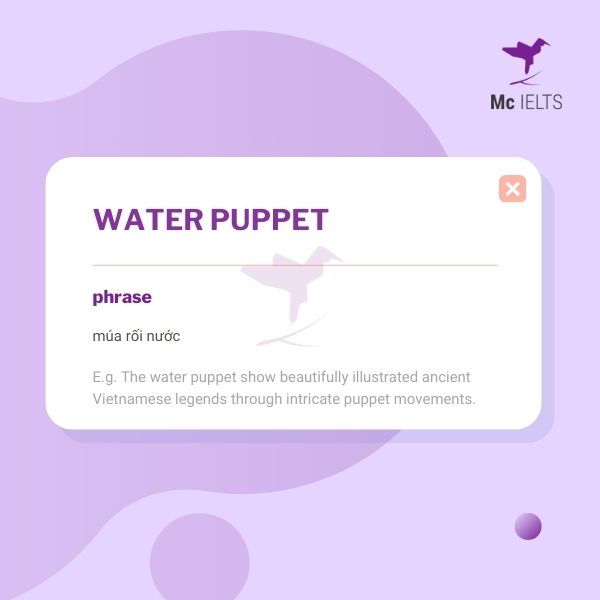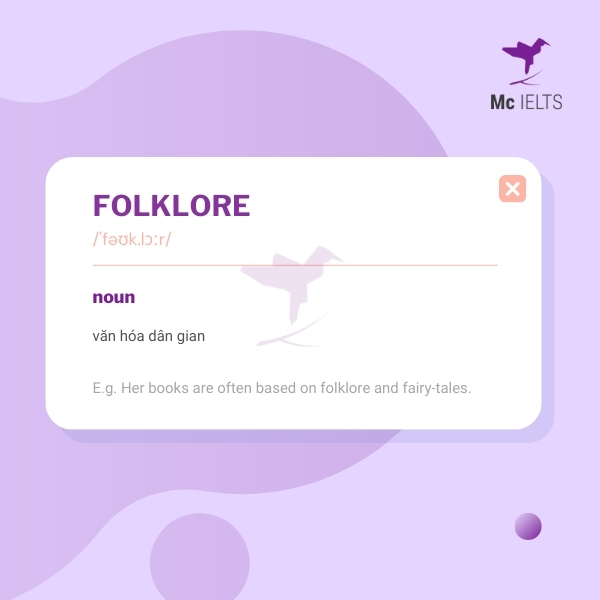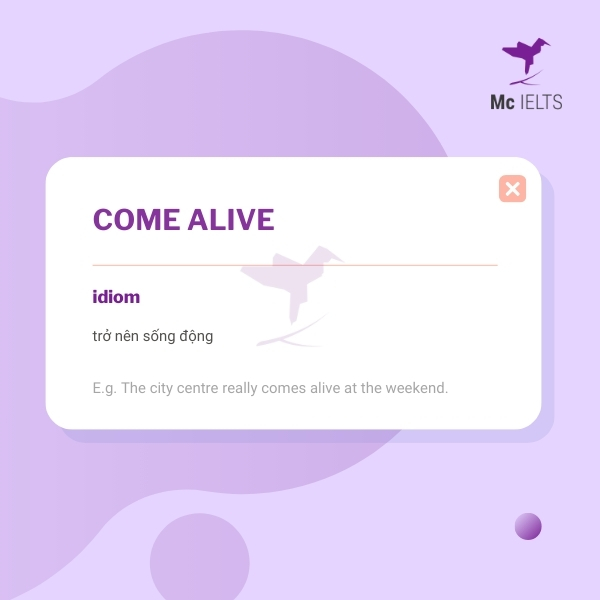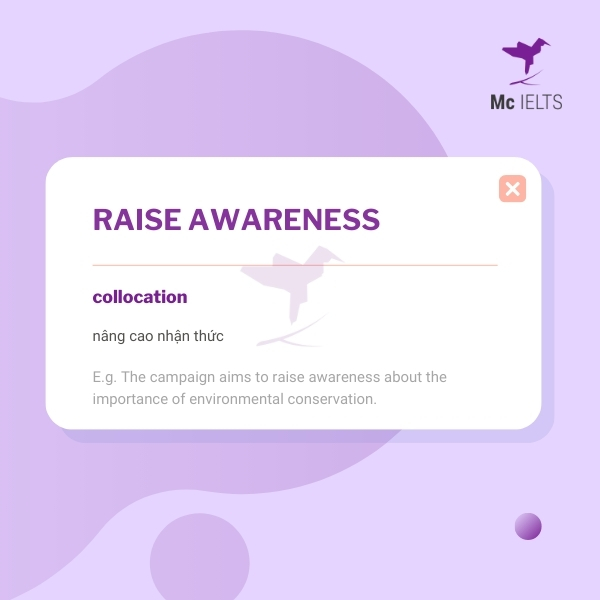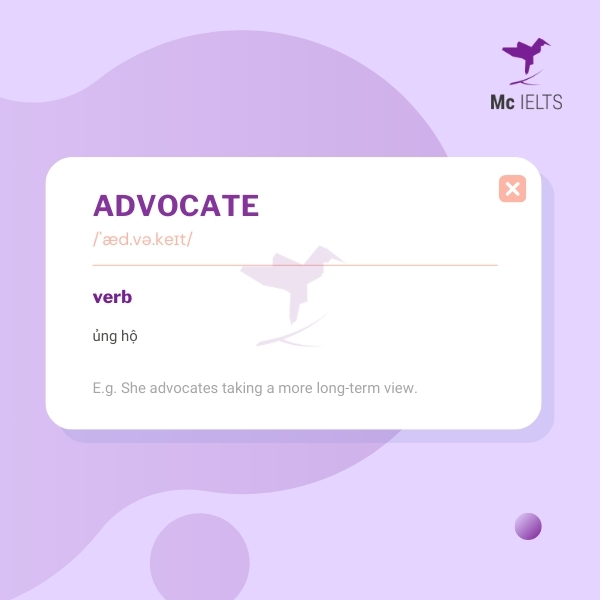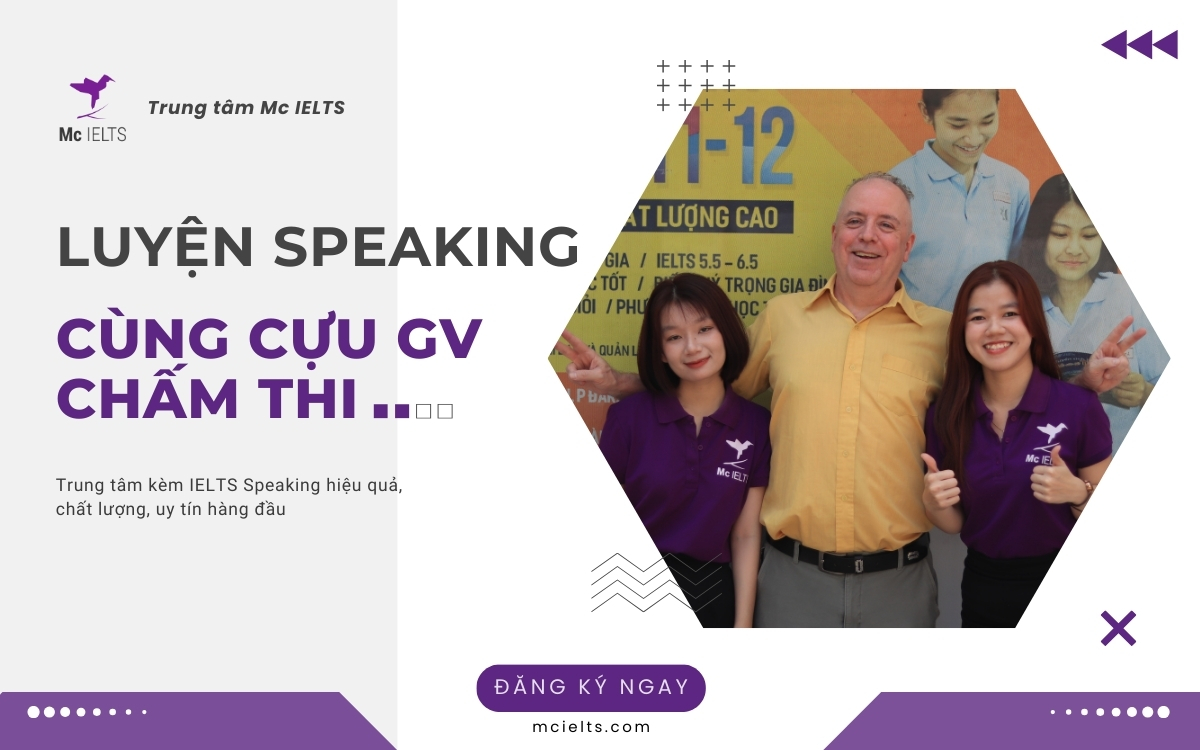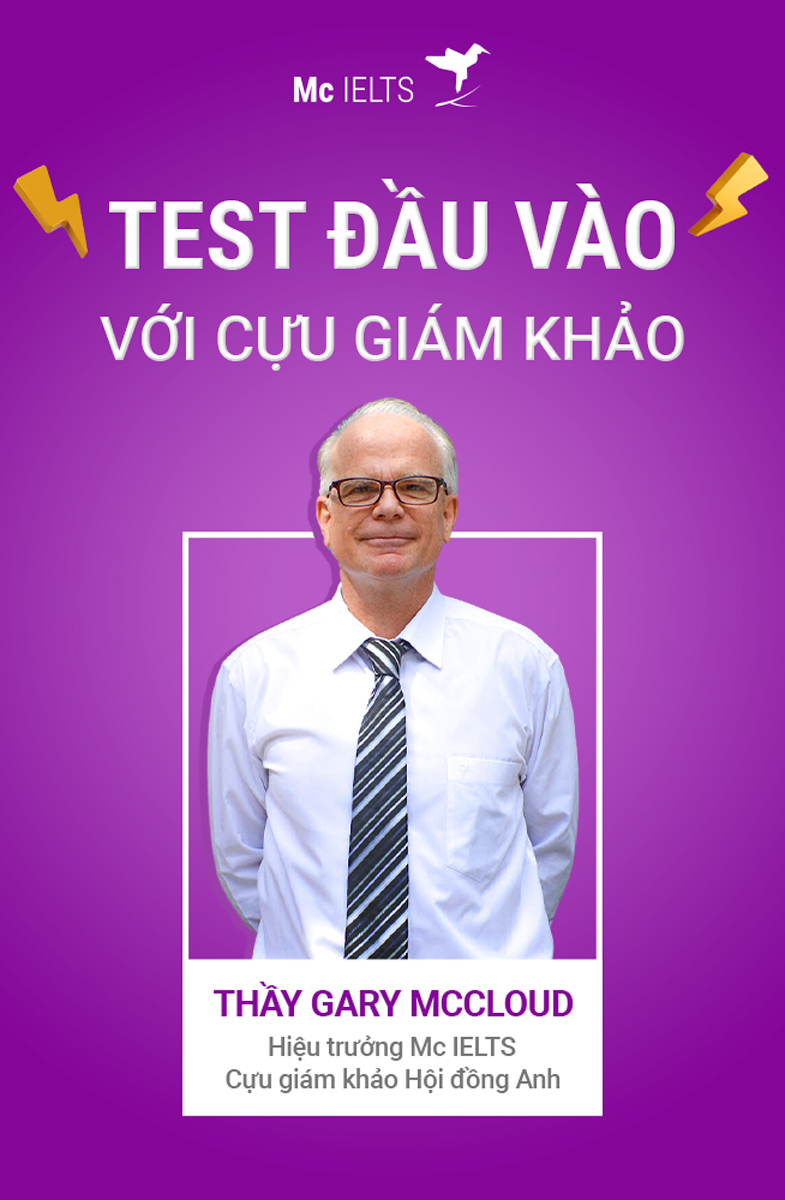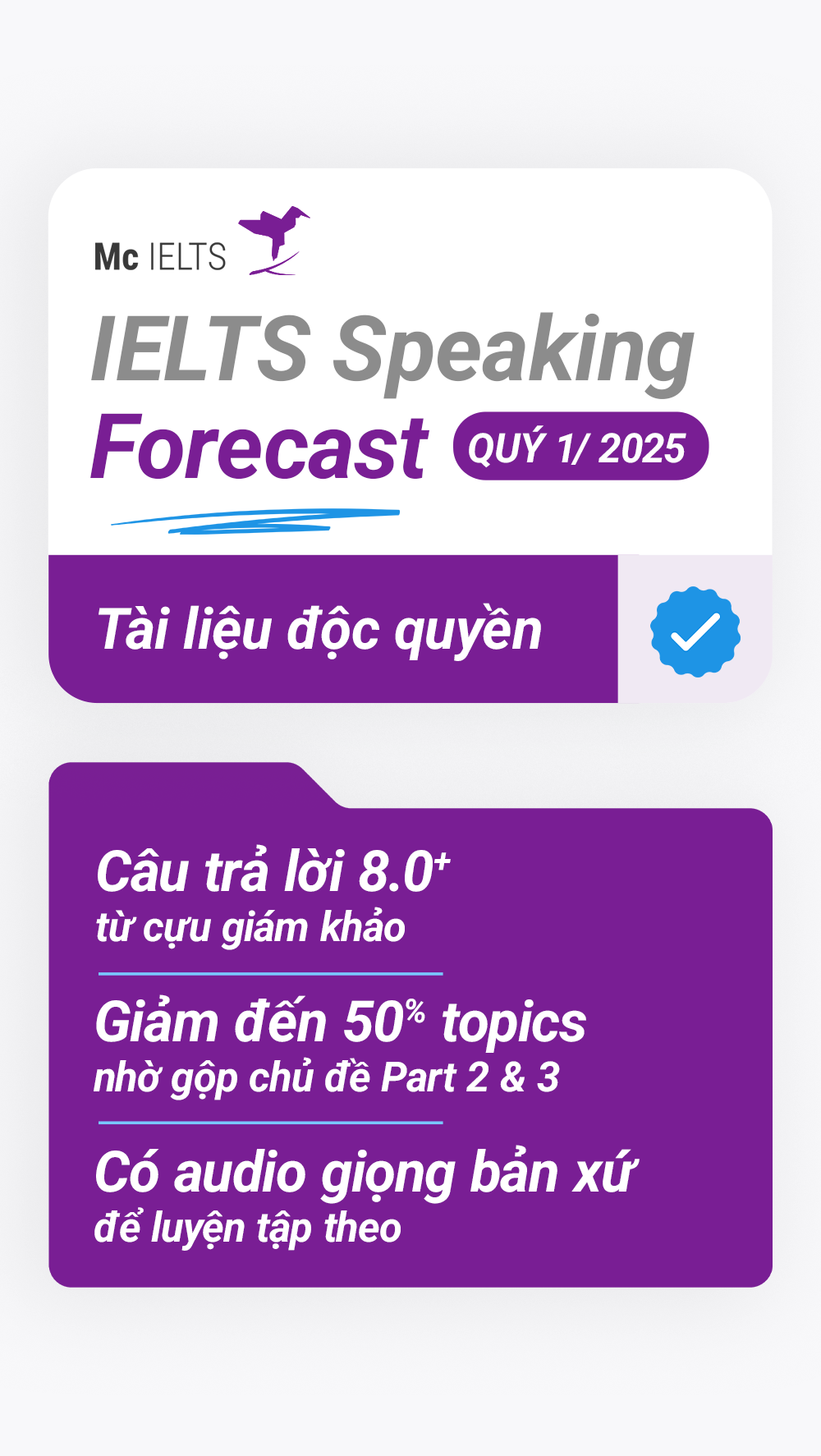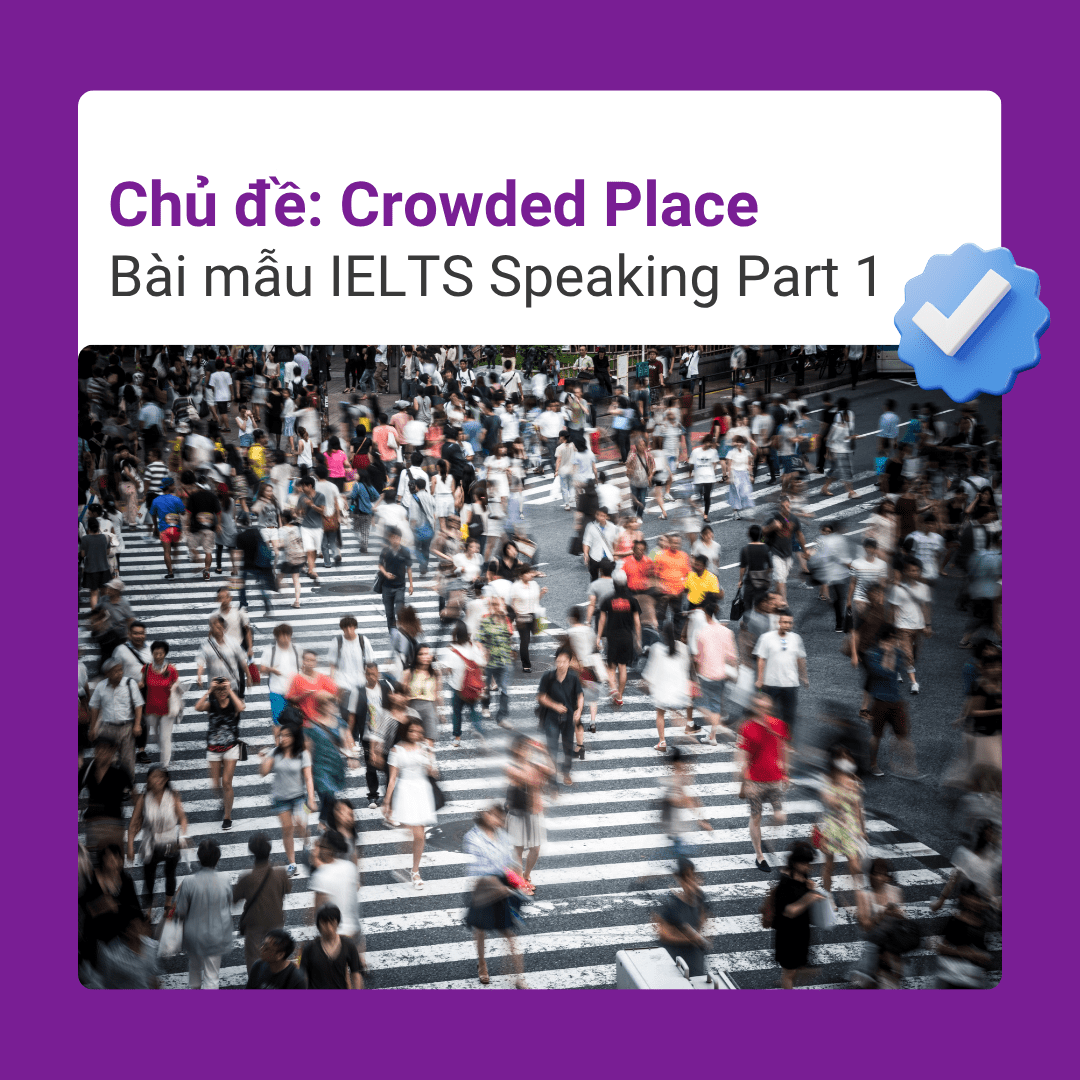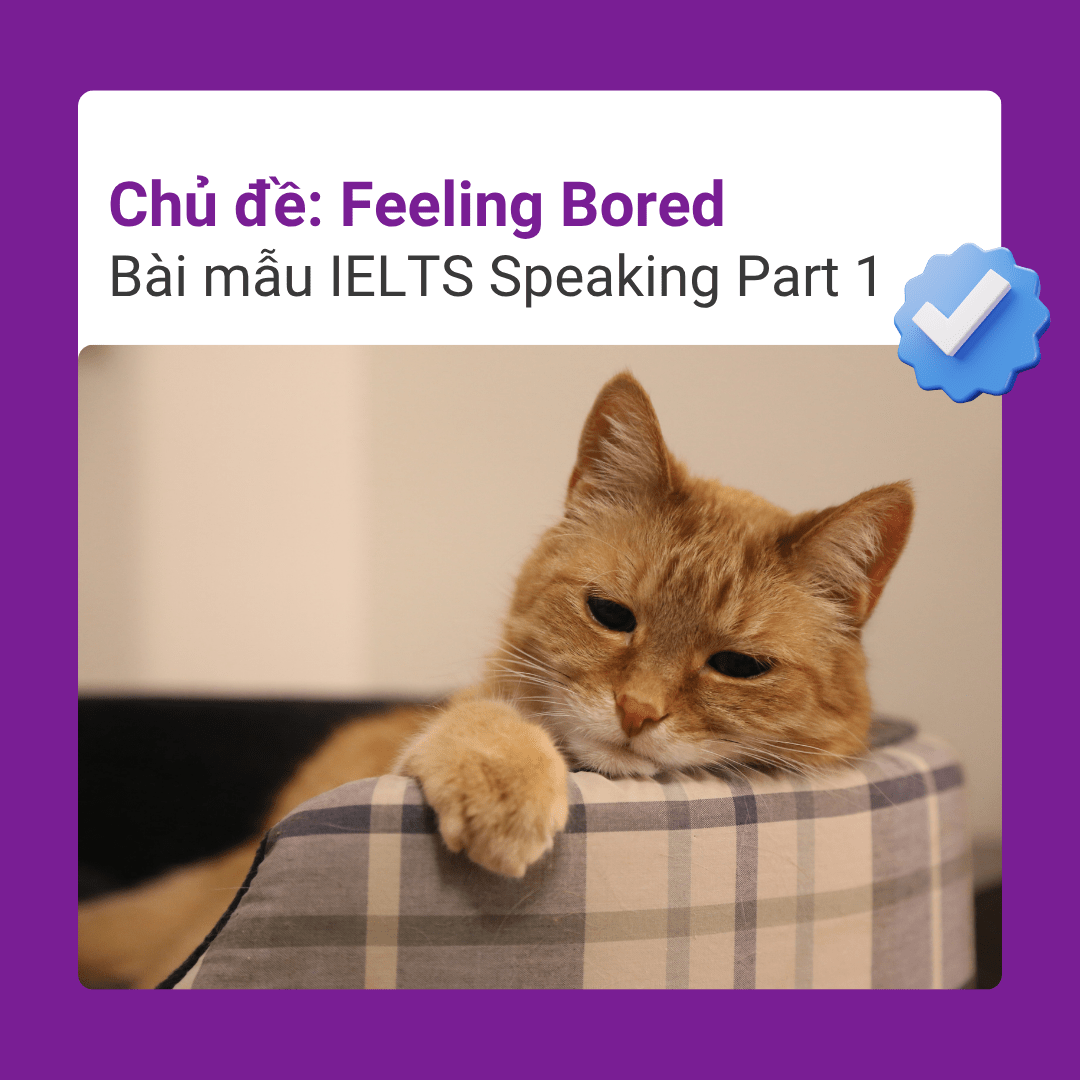Đề và câu trả lời mẫu IELTS Speaking Museum Part 1,2,3
 25/09/2024
25/09/2024
 Tác giả : Mc IELTS
Tác giả : Mc IELTS
Bạn đang chuẩn bị cho kỳ thi IELTS và cảm thấy lo lắng về chủ đề Museum Speaking IELTS? Đừng lo lắng! Phần thi IELTS Speaking về chủ đề Bảo tàng (Museum) là một trong những phần hấp dẫn và đầy thú vị mà bạn có thể gặp. Bài viết này của Trung tâm Anh ngữ Mc IELTS sẽ giúp bạn tự tin hơn với những câu trả lời mẫu cho phần 1, 2 và 3. Hãy cùng khám phá và nâng cao kỹ năng Speaking của bạn ngay hôm nay!
| Key takeaway |
| Tổng hợp các cấu trúc thường dùng trong IELTS Museum Speaking.
Câu hỏi Topic Museum Speaking IELTS Part 1:
Câu hỏi IELTS Museum Speaking Part 2:
Câu hỏi chủ đề Museum Speaking IELTS Part 3:
Những từ vựng thường gặp trong chủ đề IELTS Museum Speaking. |
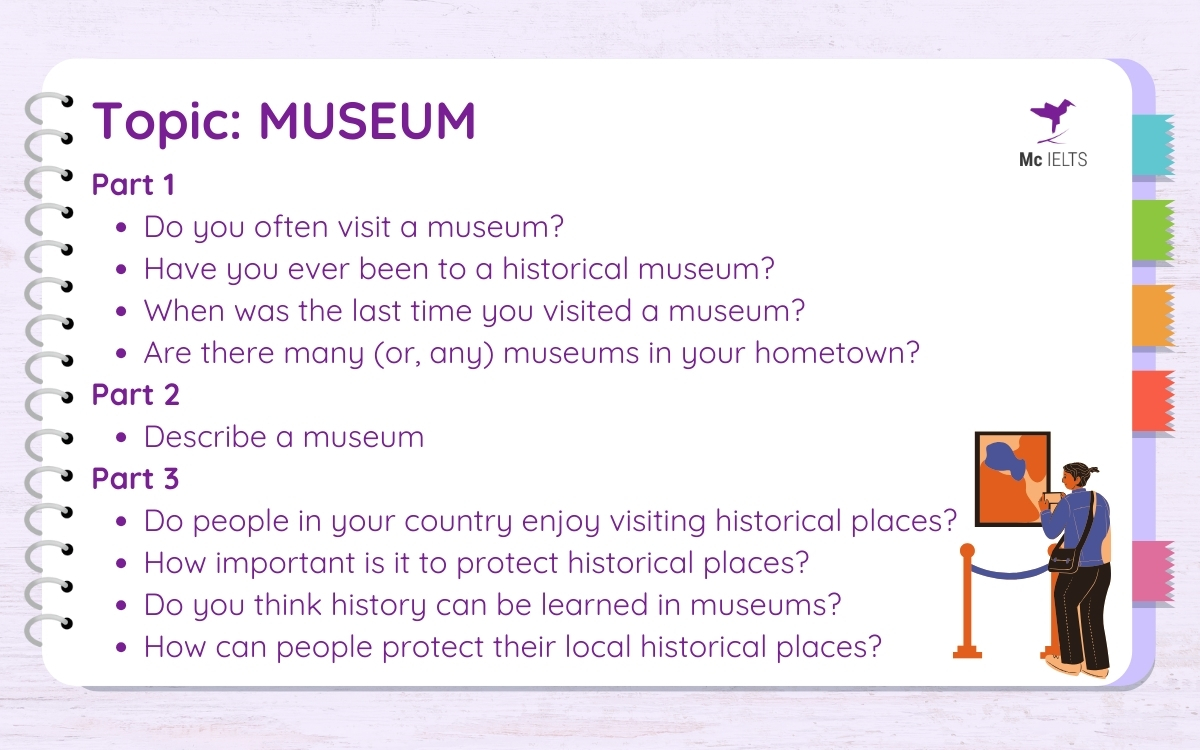
Một số câu hỏi topic Speaking IELTS topic Museum
Những cấu trúc thường dùng trong topic Museum Speaking IELTS
Để trả lời tốt các câu hỏi liên quan đến chủ đề IELTS Museum Speaking, việc sử dụng các cấu trúc câu phù hợp và đa dạng là rất quan trọng. Dưới đây là một số cấu trúc thường dùng sẽ giúp bạn diễn đạt ý tưởng một cách rõ ràng và mạch lạc hơn. Hãy cùng tham khảo và luyện Speaking IELTS tập trung vào những cấu trúc này để cải thiện kỹ năng nói của bạn!
- Plays a crucial role: Đóng vai trò quan trọng.
E.g. This museum plays a crucial role in preserving Vietnam’s contemporary art.
(Bảo tàng này đóng vai trò quan trọng trong việc bảo tồn nghệ thuật hiện đại của Việt Nam.)
- Have a strong interest in: Có sự quan tâm đặc biệt đến.
E.g. I have a strong interest in technology, so I thoroughly enjoy visiting science museums.
(Tôi có sự quan tâm lớn đến công nghệ, vì vậy tôi rất thích thú khi tham quan các bảo tàng khoa học.)
- One of the most impressive: Một trong những điều ấn tượng nhất.
E.g. One of the most impressive artifacts in this museum is the complete dinosaur skeleton.
(Một trong những hiện vật ấn tượng nhất trong bảo tàng này là bộ xương khủng long hoàn chỉnh.)
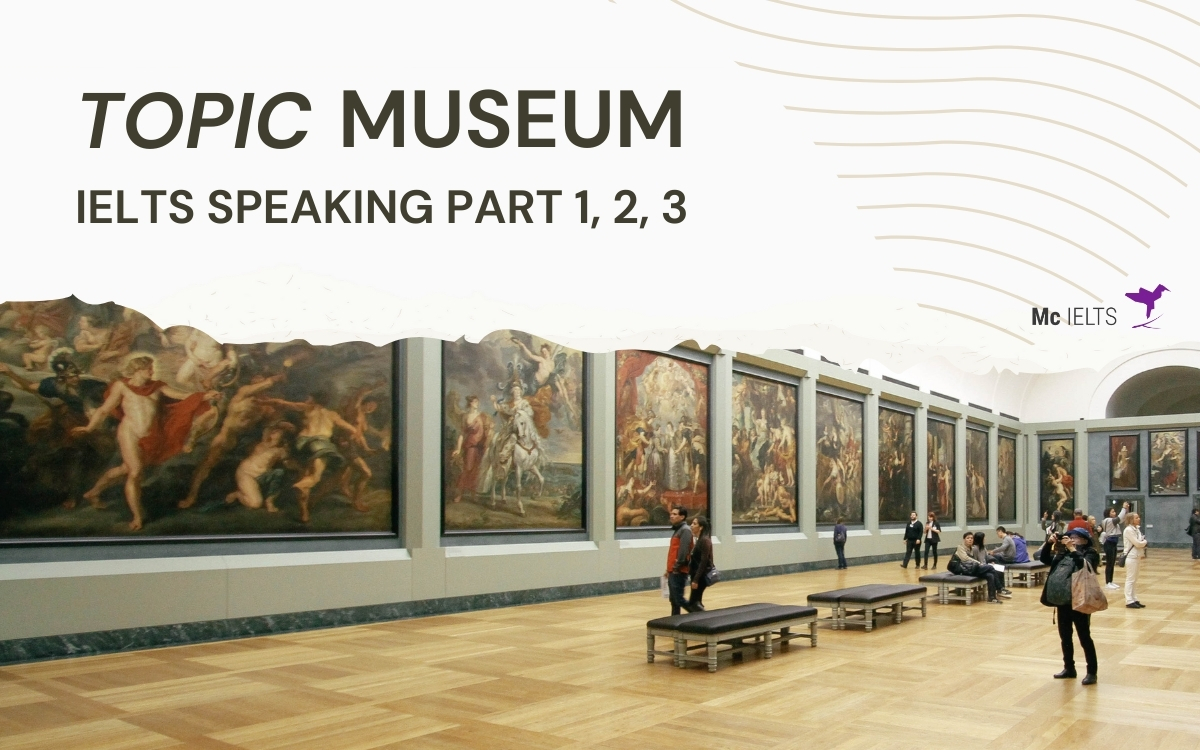
Cấu trúc thông dụng trong topic IELTS Museum Speaking
Bài mẫu topic Museum Speaking IELTS Part 1
Để giúp bạn có sự chuẩn bị tốt nhất cho phần 1 của bài thi IELTS Museum Speaking, Mc IELTS đã tổng hợp những câu hỏi và câu trả lời mẫu. Những sample answer này không chỉ giúp bạn nắm bắt cấu trúc câu trả lời hiệu quả, mà còn mở rộng vốn từ vựng và ý tưởng liên quan đến bảo tàng. Hãy cùng tìm hiểu và vận dụng trong quá trình học IELTS Speaking Online để đạt kết quả cao nhất trong kỳ thi của bạn!
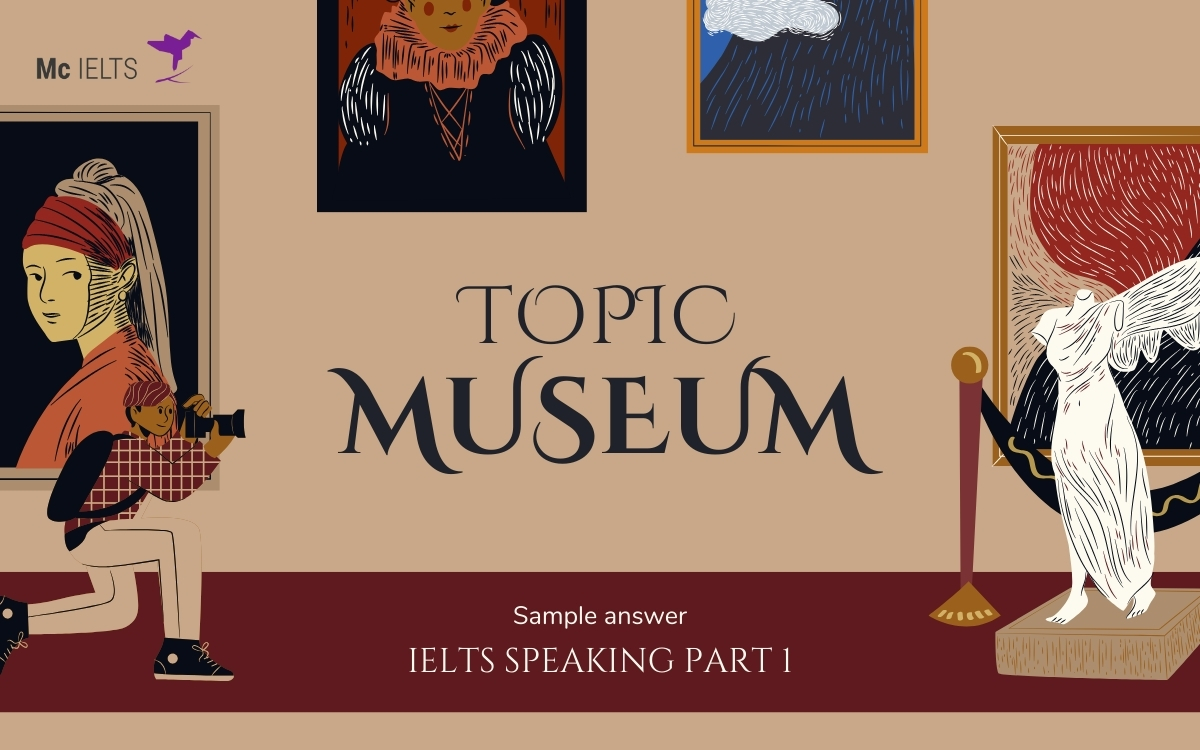
Sample answer topic IELTS Museum Speaking Part 1
Do you often visit a museum?
I don’t visit museums very often, but I do enjoy going when I get the chance. I appreciate the chance to explore new exhibits and learn about different cultures and histories. Museums offer a unique perspective on the world that you don’t get from books or online sources. It’s a refreshing change of pace and a great way to spend an afternoon.
Từ vựng:
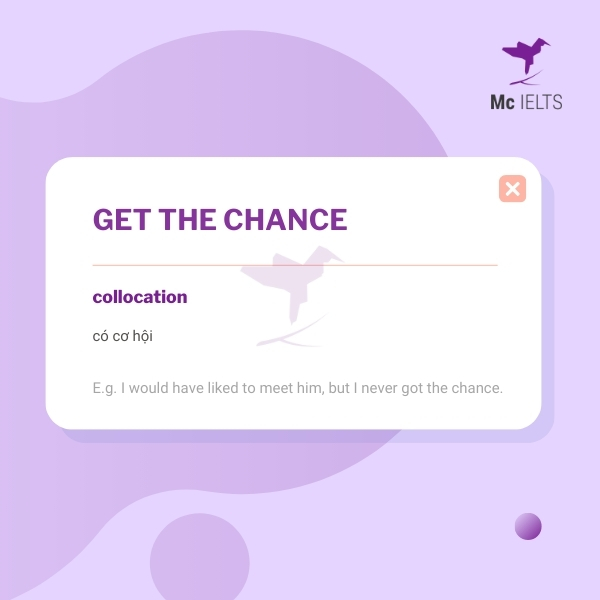
Have you ever been to a historical museum?
Yes, I’ve been to several historical museums, and they are always fascinating. I love seeing artifacts and learning about the past in a way that feels very immersive. Historical museums provide a tangible connection to history, making it easier to understand and appreciate different time periods. They also often have well-curated exhibits that make learning enjoyable and engaging.
Từ vựng:
When was the last time you visited a museum?
The last time I visited a museum was a few months ago. I went to an art museum in the city to see a special exhibition on contemporary art. It was a fantastic experience, and I spent several hours exploring the different galleries. I find that visiting museums can be a great way to break up the routine and gain some fresh insights.
Từ vựng:
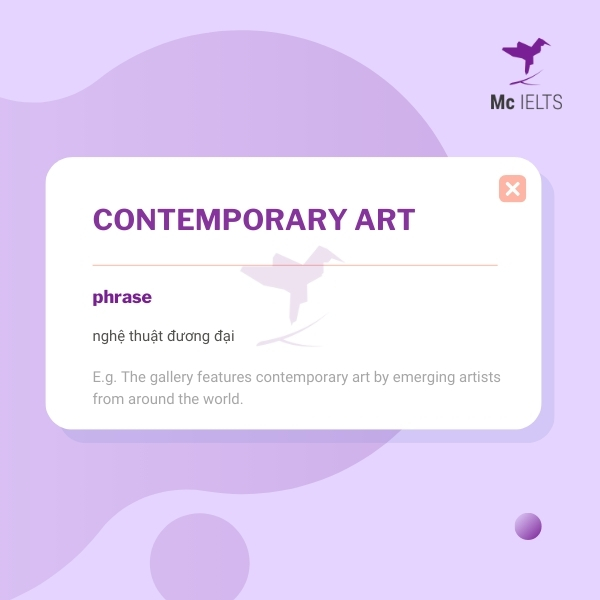
Are there many (or, any) museums in your hometown?
Yes, there are quite a few museums in my hometown, ranging from art and history to science and technology. It’s great because there’s always something new to explore. For example, we have a well-known science museum that’s popular with families and schools. The variety of museums adds a lot of cultural richness to the area.
Từ vựng:
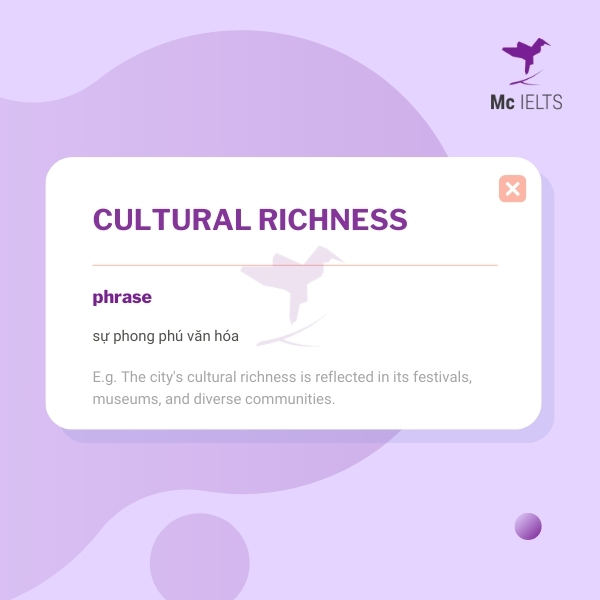
Do you think museums are useful for visitors to your hometown/country?/ Do you think museums are important?
Absolutely, museums are incredibly useful for visitors as they offer a deep dive into the local culture and history. They provide a window into the past and help people understand the present better. Museums also contribute to cultural tourism, which can boost the local economy. Overall, they are important educational resources and great for preserving heritage.
Từ vựng:
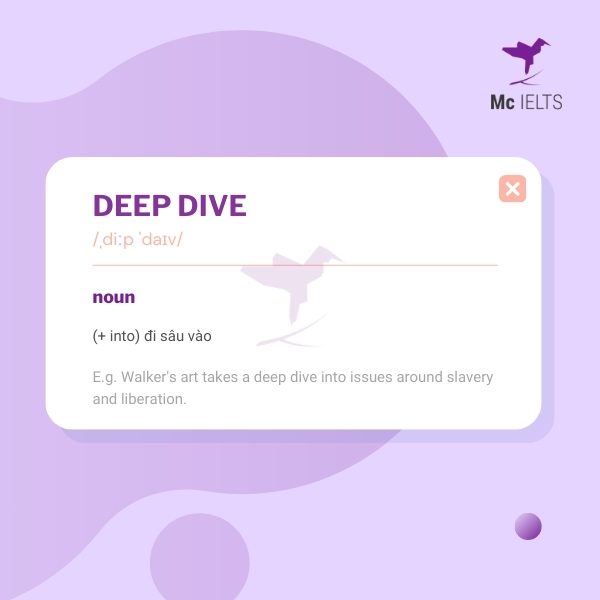
Do you think it’s suitable for museums to sell things to visitors?
Yes, I think it’s suitable for museums to sell items to visitors, like books, souvenirs, or educational materials. It helps museums generate revenue, which can be used for maintaining exhibits and funding educational programs. However, it’s important that the focus remains on the educational and cultural mission of the museum. Merchandise should complement, rather than overshadow, the museum experience.
Từ vựng:
Bài mẫu topic Museum Speaking IELTS Part 2
Trong phần 2 của bài thi IELTS Speaking, bạn sẽ có cơ hội mô tả chi tiết về một bảo tàng mà bạn đã từng thăm hoặc nghe nói đến. Dưới đây là bài mẫu giúp bạn hình dung rõ hơn cách trả lời một cách tự tin và thuyết phục nhất cho câu hỏi IELTS Museum Speaking Part 2. Hãy cùng khám phá những gợi ý hữu ích này và vận dụng chúng trong quá trình luyện IELTS Online để chuẩn bị tốt nhất cho phần thi của mình!
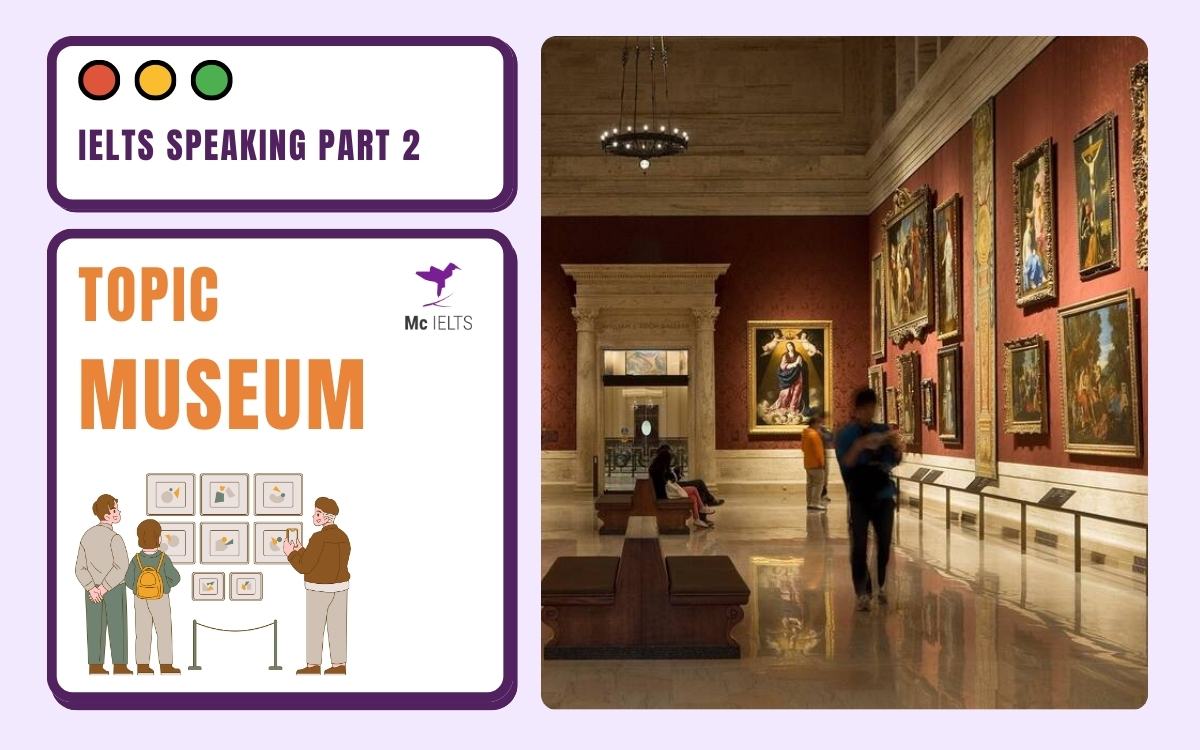
Model answer chủ đề IELTS Speaking topic Museum Part 2
Question: Describe a museum.
I’d like to talk about a museum that I visited recently, which left a lasting impression on me. The museum is the Vietnam Museum of Ethnology, located in Hanoi. This museum is dedicated to preserving and showcasing the rich cultural diversity of Vietnam’s 54 ethnic groups.
The first thing that struck me about the museum was its layout. It’s divided into two main sections: an indoor exhibition and an outdoor display area. Inside, the exhibitions are meticulously curated, with artifacts, traditional clothing, and tools from various ethnic groups on display. Each exhibit is accompanied by detailed information, which gives visitors a deep understanding of the cultural practices, beliefs, and daily lives of these communities. I particularly enjoyed the section on the Hmong and Tay people, where I learned about their unique weaving techniques and vibrant textile patterns.
The outdoor area was equally fascinating. It features full-scale replicas of traditional houses from different ethnic groups. These houses are constructed using authentic materials and techniques, offering a tangible insight into how these communities live. Walking through these homes felt like stepping back in time, and it was amazing to see the diversity in architectural styles across the country.
One of the highlights of my visit was watching a traditional water puppet show, which is a famous art form in northern Vietnam. The performance was both entertaining and educational, depicting scenes from rural life and folklore.
Overall, the Vietnam Museum of Ethnology is a place that beautifully encapsulates the cultural richness of Vietnam. It’s not just a museum but a vibrant space where history and tradition come alive, making it a must-visit for anyone interested in understanding the cultural fabric of Vietnam.
Từ vựng:
Bài mẫu topic Museum Speaking IELTS Part 3
Phần 3 của bài thi IELTS Speaking sẽ đưa bạn vào những cuộc thảo luận sâu hơn về vai trò và ý nghĩa của bảo tàng trong xã hội. Đây là cơ hội để bạn thể hiện khả năng lập luận và phân tích của mình. Dưới đây là một số câu hỏi và câu trả lời mẫu IELTS Museum Speaking Part 3 giúp bạn học IELTS hiệu quả hơn và chuẩn bị tốt nhất cho phần thi này. Hãy cùng tham khảo để nâng cao kỹ năng và sự tự tin khi bước vào phòng thi!
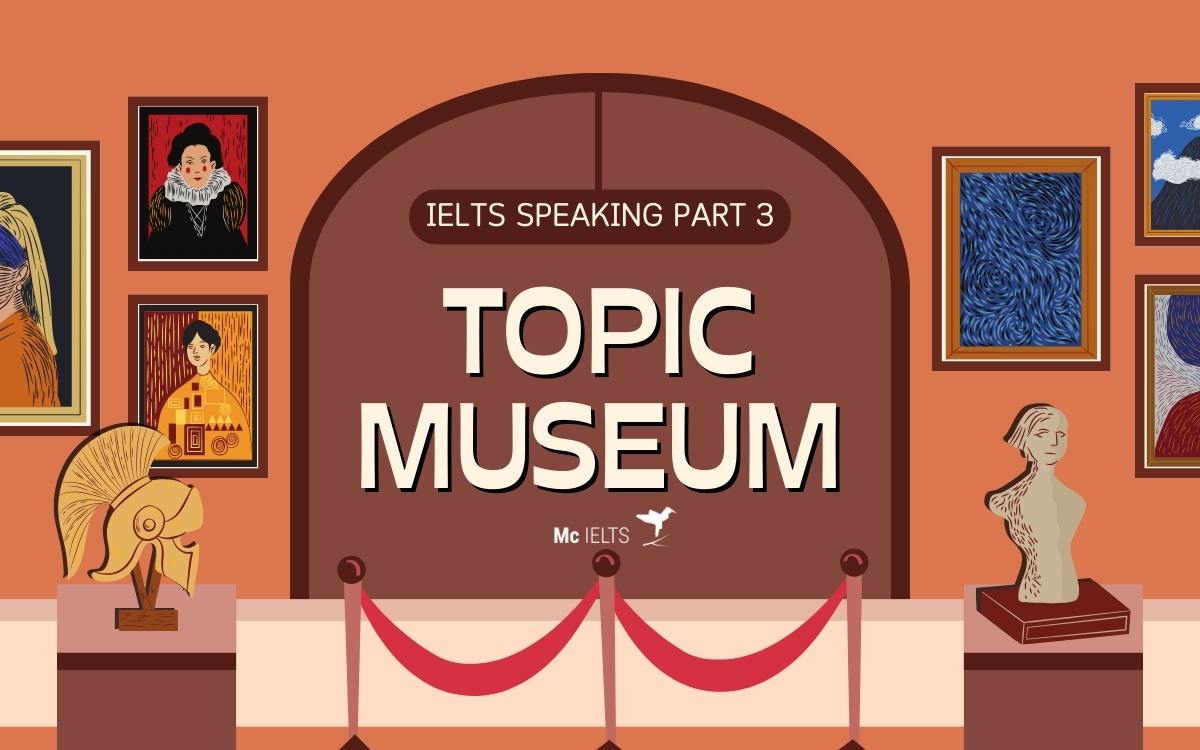
Sample answer topic IELTS Museum Speaking Part 3
Do people in your country enjoy visiting historical places?
Oh, definitely! Many people love visiting historical places because it’s a way to connect with the past and appreciate the rich heritage. These sites often tell stories that you just can’t get from a textbook. Plus, they’re usually located in beautiful areas that make for a great day out with family or friends.
Từ vựng:
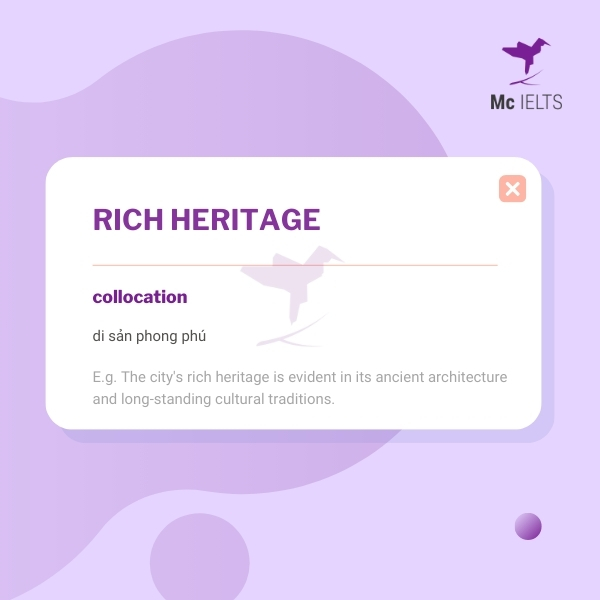
How important is it to protect historical places?
It’s incredibly important to protect historical places. They’re like living records of our history, offering insights into our cultural identity and shared heritage. If we don’t take care of them, we risk losing irreplaceable links to the past. Protecting these sites also ensures that future generations can experience and learn from them.
Từ vựng:
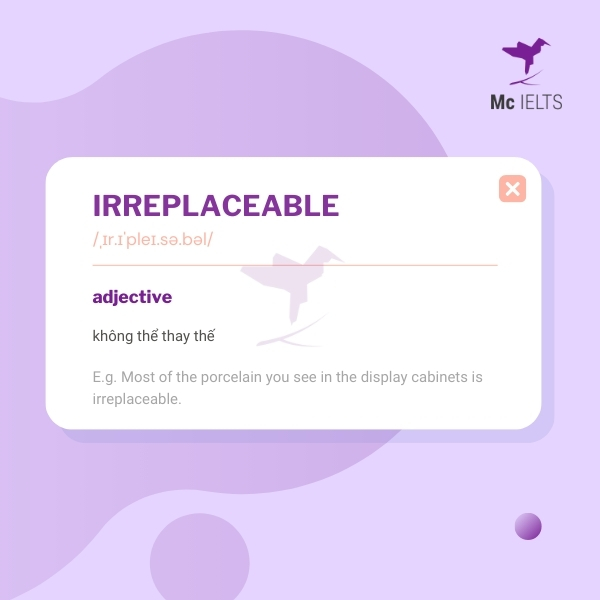
Do you think history can be learned in museums?
Absolutely, museums are fantastic places to learn history. They bring the past to life through artifacts, exhibits, and interactive displays, making history tangible and engaging. While books and documentaries are great, seeing real objects and evidence from the past can leave a lasting impression. Plus, museums often offer detailed information and context that you might not find elsewhere.
Từ vựng:
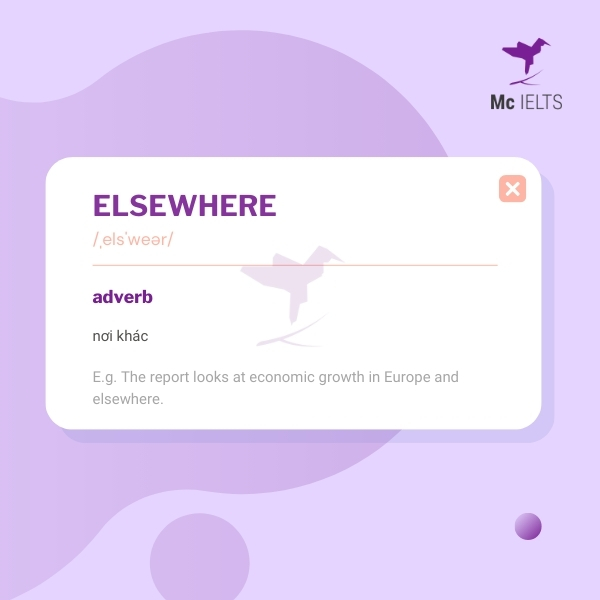
How can people protect their local historical places?
People can protect local historical places by raising awareness and advocating for preservation efforts. Getting involved in community initiatives, like clean-up days or fundraising for restoration projects, can make a big difference. It’s also important to follow guidelines when visiting these sites, like not littering or damaging structures. Supporting local tourism and educating others about the significance of these places helps ensure they’re valued and maintained.
Từ vựng:
Tổng hợp từ vựng chủ đề Museum Speaking IELTS
Khi chuẩn bị cho bài thi IELTS Museum Speaking, việc nắm vững từ vựng chuyên ngành là vô cùng quan trọng. Để giúp bạn tự tin hơn và dễ dàng diễn đạt ý tưởng của mình, chúng tôi đã tổng hợp một danh sách từ vựng phong phú và hữu ích liên quan đến chủ đề này. Hãy cùng khám phá và học thuộc những từ vựng này để học IELTS hiệu quả và cải thiện kỹ năng Speaking của bạn!
| STT | Từ vựng | Ý nghĩa | Ví dụ |
|---|---|---|---|
| 1 | Art museum (n) | Bảo tàng nghệ thuật | We visited the art museum to see the new exhibition on impressionist paintings. |
| 2 | History museum (n) | Bảo tàng lịch sử | The history museum has a new exhibit on ancient civilizations. |
| 3 | National museum (n) | Bảo tàng quốc gia | The national museum showcases artifacts from the country’s rich cultural heritage. |
| 4 | Military museum (n) | Bảo tàng quân sự | The military museum features a display of historic tanks and aircraft. |
| 5 | Collect (v) | Thu thập | This institution aims to collect and preserve historical documents. |
| 6 | Preserve (v) | Gìn giữ | The organization works to preserve traditional crafts. |
| 7 | Display (v) | Trưng bày | The museum will display rare manuscripts in its upcoming exhibit. |
| 8 | Educate (v) | Giáo dục | The museum’s educational programs help students learn about ancient history. |
| 9 | Raise/further public awareness (v) | Nâng cao nhận thức cộng đồng | The campaign aims to raise public awareness about the importance of biodiversity. |
| 10 | Develop a sense of appreciation (v) | Phát triển sự nhận thức, đánh giá | Visiting museums helps develop a sense of appreciation for different cultures. |
| 11 | Stimulate curiosity (v) | Kích thích trí tò mò | The interactive exhibits are designed to stimulate curiosity in children. |
| 12 | A piece of art (n) | Một tác phẩm nghệ thuật | The gallery’s new piece of art attracted a lot of attention from critics. |
| 13 | Masterpiece (n) | Kiệt tác | Michelangelo’s David is considered a masterpiece of Renaissance sculpture. |
| 14 | Relic (n) | Di vật | The ancient relics were discovered during an archaeological dig. |
| 15 | Sculpture (n) | Điêu khắc | The modern sculpture in the park is a popular spot for photos. |
| 16 | Drawing (n) | Bức vẽ | Her drawing of the landscape was highly detailed and realistic. |
| 17 | Ceramics (n) | Đồ gốm | The exhibit features ancient ceramics from various cultures. |
| 18 | Document (n) | Tài liệu | The museum has a large collection of historical documents. |
| 19 | Specimen (n) | Mẫu vật | The natural history museum has a new dinosaur specimen on display. |
| 20 | Exhibit (n/v) | Triển lãm | The museum will exhibit a collection of rare coins. |
| 21 | Artifact (n) | Hiện vật | The artifact was carefully restored by the museum’s conservators. |
| 22 | Curator (n) | Người quản lý bảo tàng | The curator gave us a behind-the-scenes look at the new exhibit. |
| 23 | Collection (n) | Bộ sưu tập | The museum’s collection includes works from various historical periods. |
| 24 | Gallery (n) | Phòng trưng bày | The gallery’s latest show features contemporary artists. |
| 25 | Guided Tour (n) | Chuyến tham quan có hướng dẫn | We took a guided tour of the museum to learn more about its exhibits. |
| 26 | Archaeology (n) | Khảo cổ học | Archaeology can reveal a lot about ancient civilizations. |
| 27 | Interactive Display (n) | Trưng bày tương tác | The interactive display allows visitors to explore the ancient ruins virtually. |
| 28 | Admission Fee (n) | Phí vào cửa | The admission fee is waived on the first Sunday of every month. |
| 29 | Historical Period (n) | Thời kỳ lịch sử | The artifacts are grouped by historical period for easier viewing. |
| 30 | Preservation (n) | Bảo tồn | The preservation of these artifacts is crucial for future study. |
| 31 | Restoration (n) | Khôi phục | The restoration of the old painting took several months. |
| 32 | Heritage (n) | Di sản | We must protect our cultural heritage for future generations. |
| 33 | Cultural Significance (n) | Tầm quan trọng văn hóa | The site is of great cultural significance and is protected by law. |
| 34 | Mural (n) | Tranh tường | The museum’s mural was painted by a famous local artist. |
| 35 | Sculpture (n) | Tượng điêu khắc | The sculpture garden is a peaceful place to relax and reflect. |
| 36 | Architectural Design (n) | Thiết kế kiến trúc | The museum’s architectural design is a blend of modern and classical styles. |
| 37 | Permanent Exhibition (n) | Triển lãm cố định | The permanent exhibition features artifacts from ancient Egypt. |
| 38 | Visitor Center (n) | Trung tâm du khách | The visitor center provides information about the museum’s history and exhibits. |
| 39 | Natural History Museum (n) | Bảo tàng lịch sử tự nhiên | The Natural History Museum has an extensive collection of fossils. |
| 40 | Modern Art (n) | Nghệ thuật hiện đại | The modern art gallery showcases works by contemporary artists. |
| 41 | Public Display (n) | Trưng bày công cộng | The ancient artifact was put on public display for the first time. |
| 42 | Tourist Attraction (n) | Điểm thu hút du khách | The museum is one of the city’s main tourist attractions. |
| 43 | Educational Outreach (n) | Công tác tuyên truyền và giáo dục | The museum’s educational outreach programs engage local schools. |
| 44 | Archival Materials (n) | Tài liệu lưu trữ | Researchers can access archival materials for their studies. |
| 45 | Artistic Expression (n) | Biểu hiện nghệ thuật | The gallery focuses on modern artistic expression. |
| 46 | Virtual Museum (n) | Bảo tàng ảo | The virtual museum offers online tours and interactive exhibits. |
| 47 | Conservationist (n) | Nhà bảo tồn | The conservationist works to protect endangered artifacts. |
| 48 | Acquisition (n) | Sự sưu tập | The museum’s latest acquisition is a rare ancient manuscript. |
| 49 | Temporary Exhibition (n) | Triển lãm tạm thời | The temporary exhibition will run until the end of the month. |
| 50 | Admire (v) | Ngưỡng mộ | Visitors can admire the beautiful artwork in the gallery. |
| 51 | Historic Landmark (n) | Di tích lịch sử | The museum is situated near several historic landmarks. |
| 52 | Art Appraisal (n) | Đánh giá nghệ thuật | The museum offers art appraisal services for collectors. |
| 53 | Artistic Movement (n) | Phong trào nghệ thuật | The exhibition highlights various artistic movements from the 20th century. |
| 54 | Historical Context (n) | Bối cảnh lịch sử | The artifacts are displayed with information about their historical context. |
| 55 | Artistic Masterpiece (n) | Kiệt tác nghệ thuật | The museum is home to several artistic masterpieces. |
| 56 | Exhibition Catalog (n) | Sách hướng dẫn triển lãm | The exhibition catalog provides detailed information about the displayed works. |
| 57 | Cultural Heritage (n) | Di sản văn hóa | Preserving cultural heritage is one of the museum’s primary goals. |
| 58 | Architectural Marvel (n) | Kỳ quan kiến trúc | The museum building itself is an architectural marvel. |
| 59 | Restoration Process (n) | Quá trình khôi phục | The restoration process of the ancient artifact was meticulously documented. |
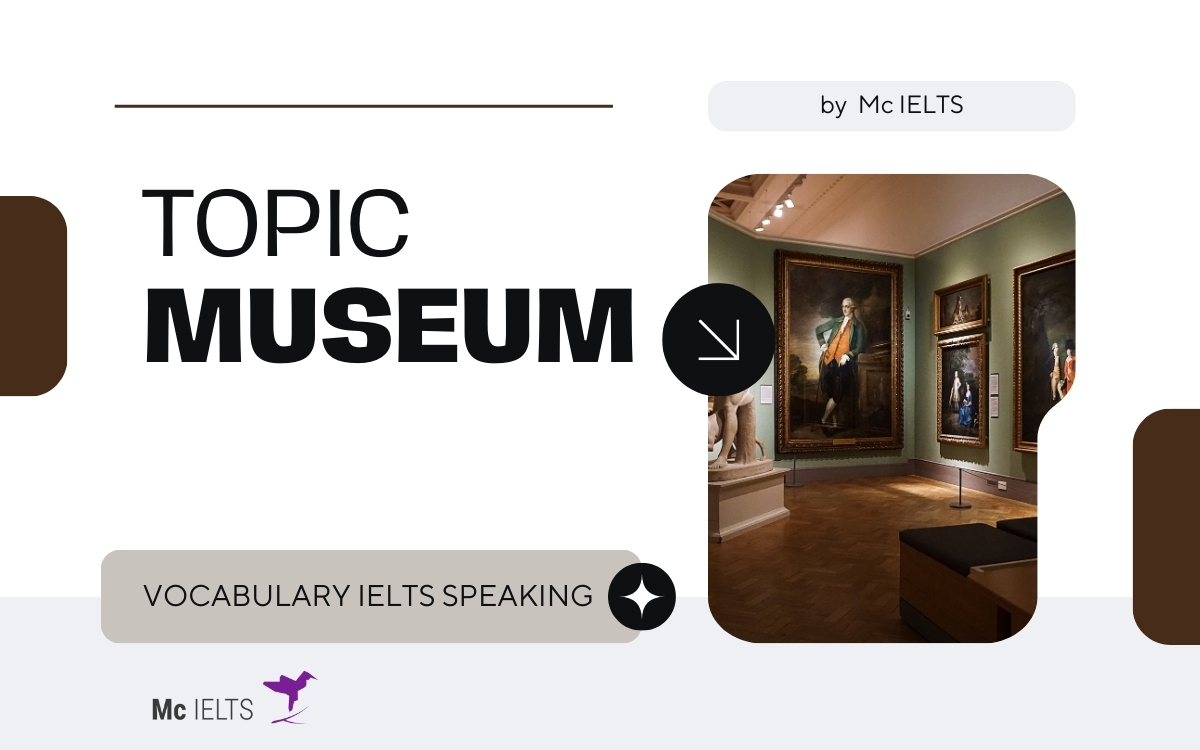
Vocabulary chủ đề IELTS Speaking topic Museum
Hy vọng rằng những bài mẫu và từ vựng chủ đề Museum Speaking IELTS trong bài viết này sẽ giúp bạn tự tin hơn khi bước vào kỳ thi IELTS. Hãy luyện tập thường xuyên và áp dụng những kiến thức đã học để cải thiện kỹ năng nói của mình. Nếu bạn cần thêm sự hỗ trợ và những bài học chuyên sâu, đừng ngần ngại đến với Mc IELTS. Chúng tôi tự hào là trung tâm luyện IELTS tốt nhất với đội ngũ giảng viên giàu kinh nghiệm, bao gồm cả những cựu giám khảo chấm thi IELTS. Tại Mc IELTS, bạn sẽ nhận được sự hướng dẫn tận tình và các phương pháp học tập tối ưu để nâng cao cả bốn kỹ năng Nghe, Nói, Đọc, Viết. Hãy ĐĂNG KÝ NGAY khóa học IELTS tại Mc IELTS để được trang bị những hành trang tốt nhất và chinh phục kỳ thi IELTS một cách xuất sắc.
Nhận lộ trình IELTS TỐI ƯU theo yêu cầu




